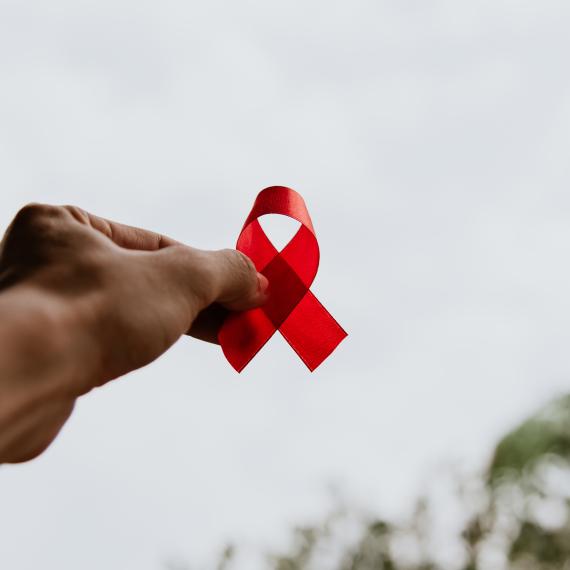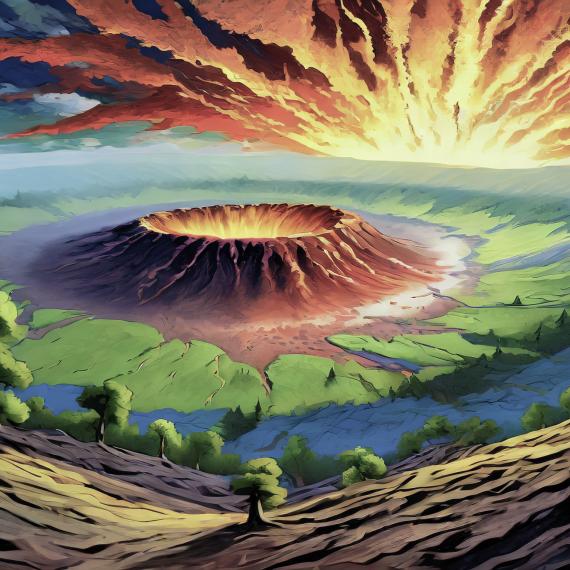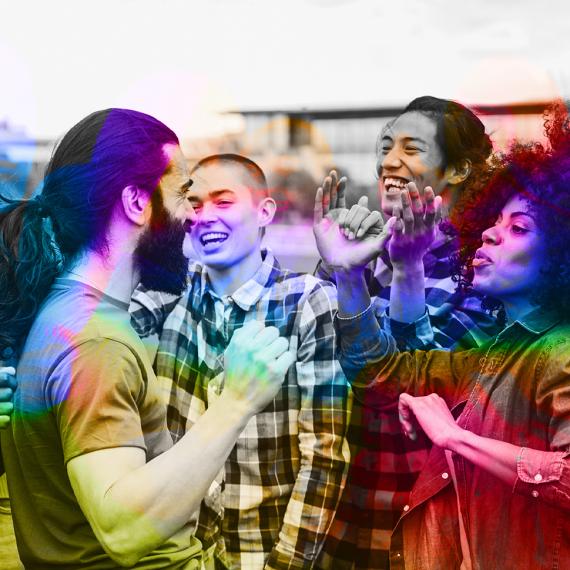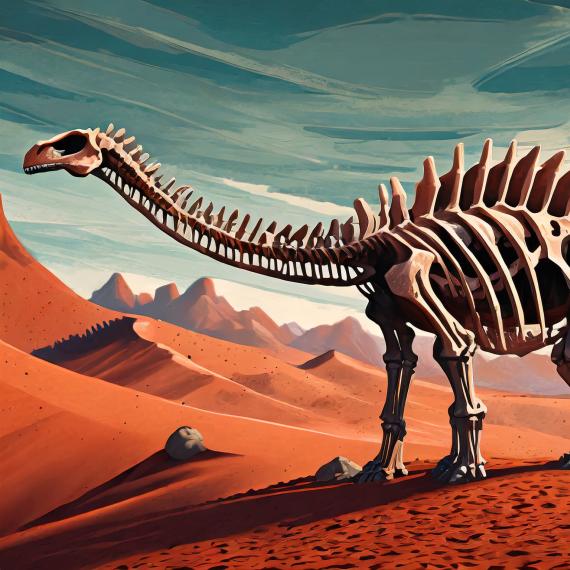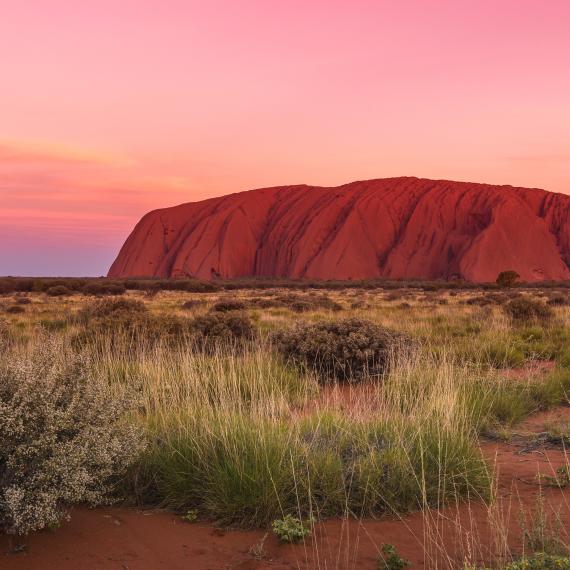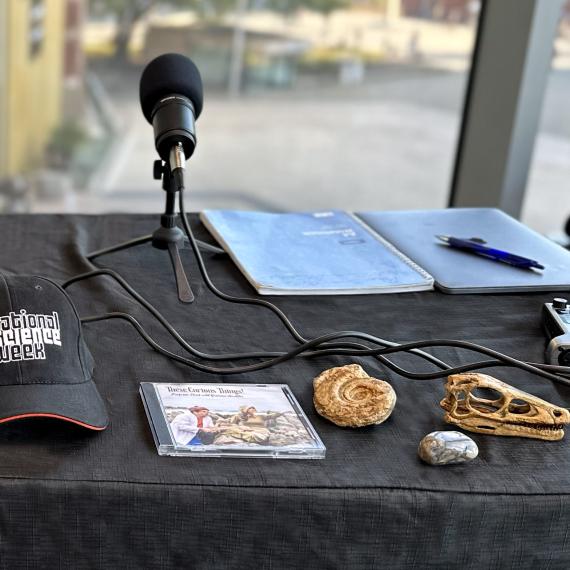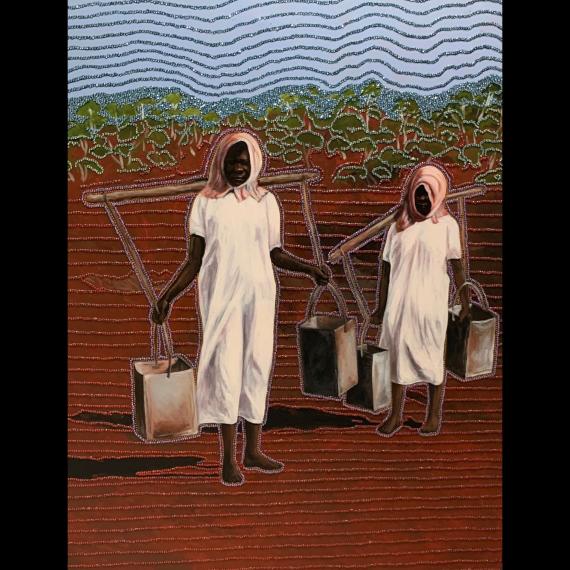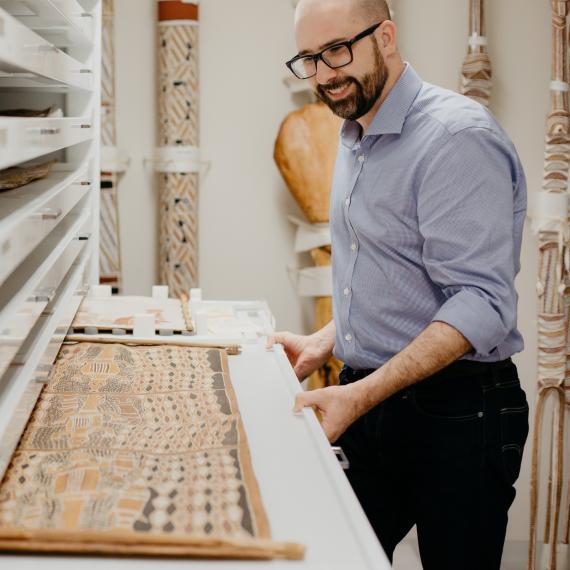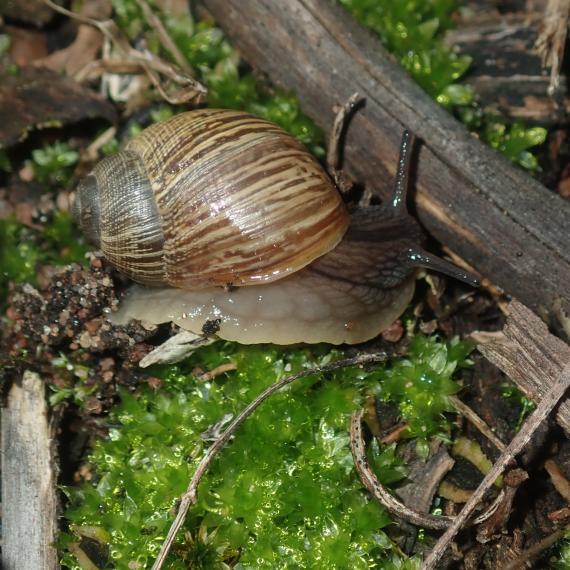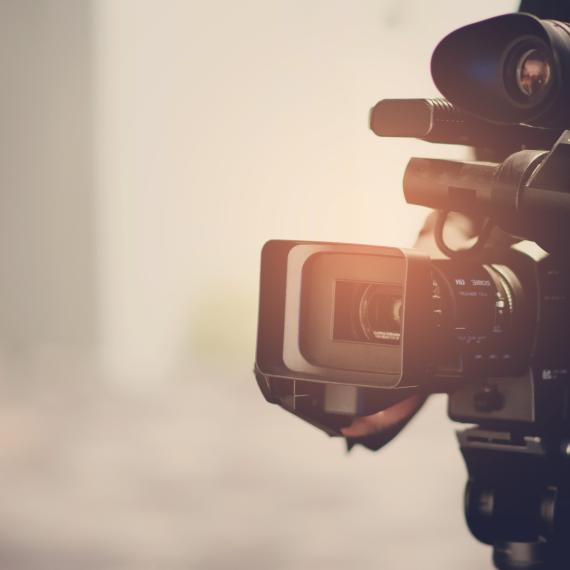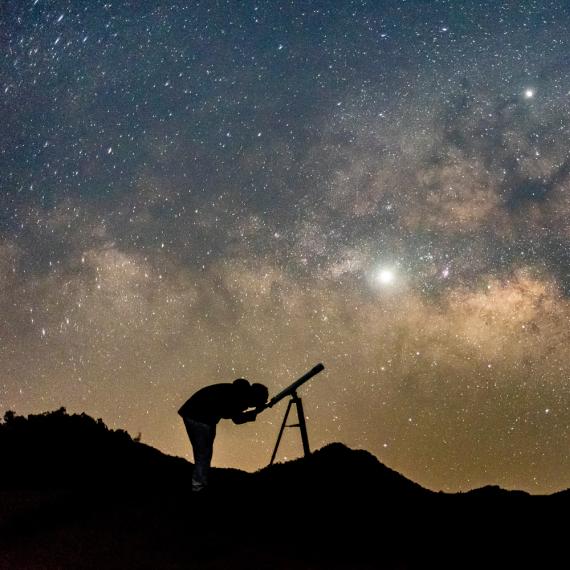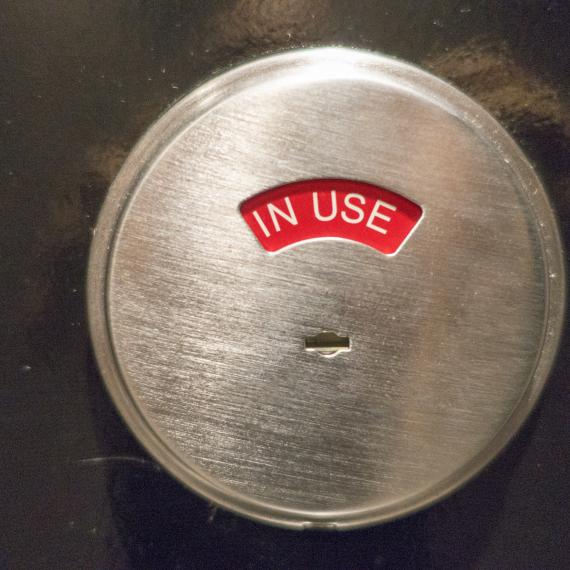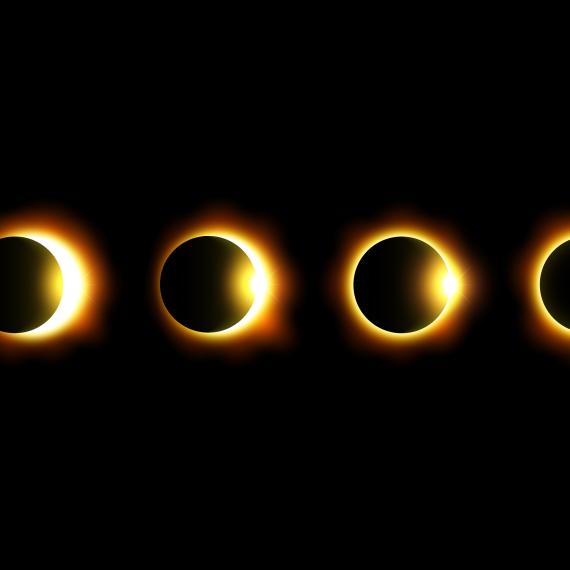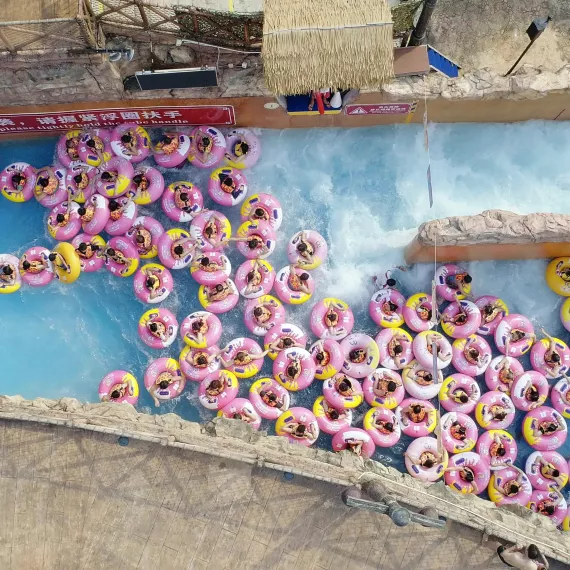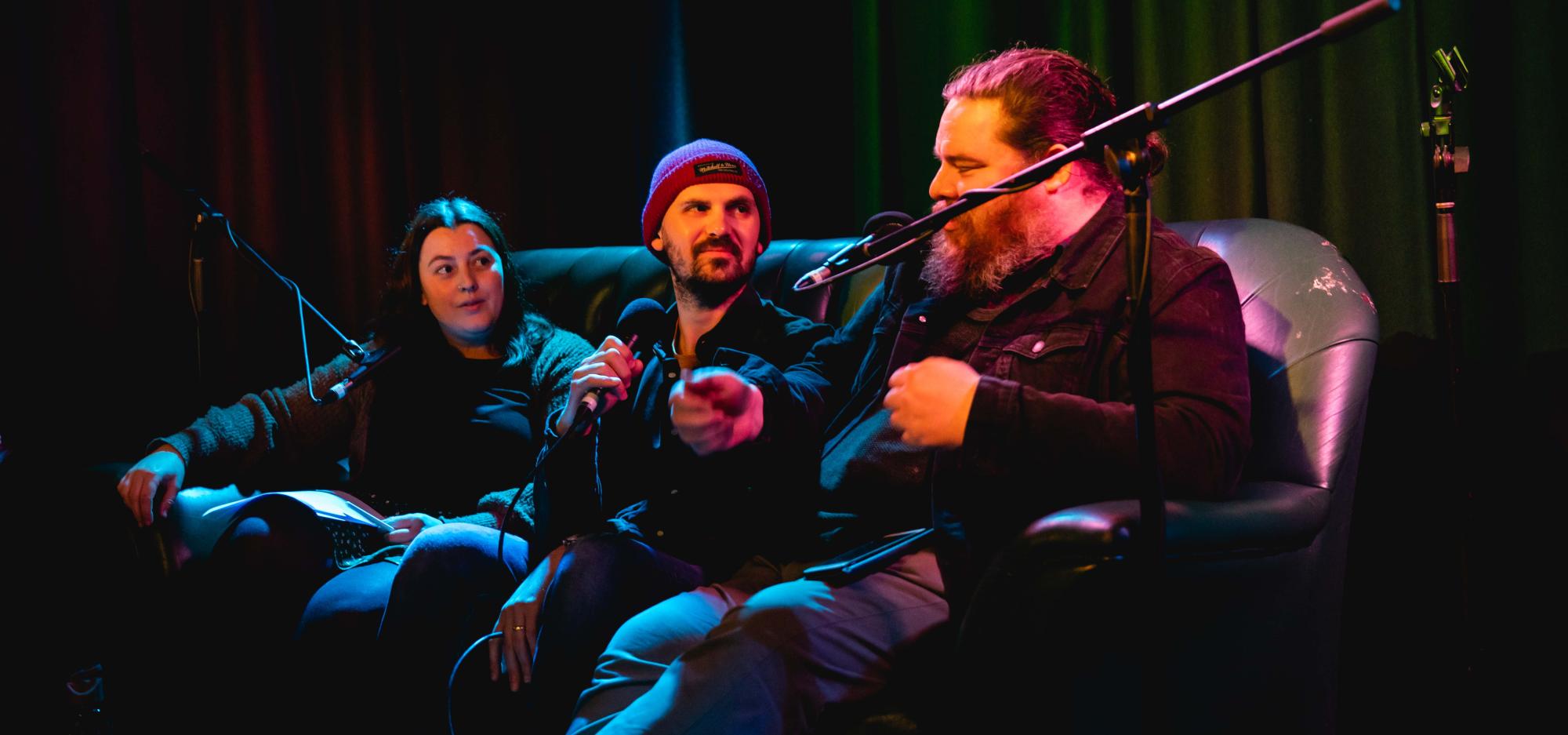
RTRFM Movie Squad: Wonderland
Simon Miraudo and Tristan Fidler from RTRFM’s ‘Movie Squad’ are joined by Chelsey O'Brien, Curator at ACMI, as they review and discuss Alice’s Adventures in Wonderland as a foundation for contemporary storytelling in film.
The duo joined us at Boola Bardip to consider Alice's journey as a blueprint for text-to-film adaptations, as well as some of the most influential films of our time — like The Matrix and Spirited Away and other oddities such as Inner Space, Don't Worry Darling, and more!
-
Episode transcript
TF: Hello, my name is Tristan Fidler
SM: And my name is Simon Miraudo
TF: And we're part of Movie Squad, which is a movie review segment every Friday morning, 7:30 am on RTR FM 92.1. We're always on there with Breakfast with Taylor to discuss new movies and new releases, but this time around, we're looking backwards, and it's tied to this new exhibition, Wonderland.
SM: We're looking through the looking glass.
TF: Yes, we're looking through the looking glass! Before we begin proper, I just want to make an acknowledgment of country and that we are on Whadjuk boodja and pay our respects to elders past, present and emerging, and recognize that we're on their land. We also have a special guest.
SM: That's right, Chelsea O'Brien from ACMI (Australian Centre for the Moving Image), where the Wonderland exhibit was initiated, I believe. Chelsea, hello.
CO: That's correct. Yes. So we were so honoured to dream up this exhibition. It originally premiered at ACMI in 2018 and before that, I was trying to remember this earlier, I believe we worked on this for three, if not four years. From hints of research, building interactives and working with all sorts of lenders and different companies, it's finally here and it's on tour and it's so wonderful to see it at the Western Australian Museum. Thanks everyone for coming and having fun in the exhibition and I can’t wait to talk all things Alice this afternoon!
TF: Awesome. There's a little bit of lag on the video there, but I reckon it's catching up. I can see it getting up to speed, which is awesome. Chelsea, it's really great to have you here sharing the conversation with us. Just a little blanket warning at the top, there are just a few little adult themes in this conversation. But thankfully, due to the size of the audience, we can kind of scan and see where we need to target and what we'll discuss.
Plenty to talk about when it comes to film adaptations of Alice in Wonderland. Films, media that have been inspired by Alice in Wonderland. I guess it's best to sort of kick off really by talking about our relationships prior to being involved with the exhibition or being asked to speak today. And maybe, Chelsea, you can kick off. What was your relationship to the Alice in Wonderland story or any of the movies?
CO: I have to say that I think when I was a kid, my immediate thought of Alice in Wonderland, was the thought of the television movie, you know, Alice in the beautiful yellow dress. That was just always the live action. That was always what I thought of. Of course, I saw the Disney animation version of Alice, but definitely kept on returning to the TV movie as a child of the nineties.
It's a story that I think is something that you return to a lot, particularly when you’re at certain ages. When you're a very small child, and then again when you were a teenager you think, ‘Oh my gosh, I want to find all the trippy references and things like that’. What a charming story that we can all return to. What about you guys?
TF: Okay, well, it's been interesting to do some research around this, but the one that I grew up with was the 1951 Alice in Wonderland. The Disney animation from that kind of old school period of Disney animation. I remember the family having VHS tapes of, you know, Snow White and the Seven Dwarves, Cinderella and Alice in Wonderland.
Reading about it, growing up with it, I just thought, ‘Oh, this has always been a classic’. It's a classic, right? Then finding out that when it was released, it was actually considered a bit of a disappointment, and only became kind of popular when they re-released it in the 1970s. Apparently, the trailer did use the Jefferson Airplane song White Rabbit, which we'll talk about a bit later on, so it's funny, and it was great to revisit that and just see the kind of psychedelic elements to the animation style, the charm of the animation style, and the mix of the broadly cartoonish characters. Alice, that style where they sort of really try to capture human movement with an actor playing the part.
So that's always been my go-to connection. When we were talking about this talk, the amount of movies, TV, music videos, just the way all the references, the phrases, the characters just re-occur and reappear throughout culture. That was what I was really keen to get into, to see all the kind of connections that this text has with other texts.
SM: Yeah. As for myself, I'd probably be like Chelsea as a nineties kid. The film version that I kept going back to in my mind was that TV movie, you know, probably one of the most inauspicious ones. It had Tina Majorino, and Whoopi Goldberg as the Cheshire cat and Miranda Richardson as the Queen. That was always implanted in my memory as the version of the Queen of Hearts, the shrill “off with their heads!”. That was the thing I kept going back to.
The Disney animation, even though I hadn't seen it in full prior to this context, that imagery is the one that we keep returning to, and I think that feels the most iconic of them all. But I read those early reviews as well from when it was released in 1951, saying it was too long or too boring. It's 75 minutes long! I think of that TV movie, which was a two-night event on NBC. So, I think appetites have changed in terms of our willingness to watch Alice in Wonderland.
TF: Yeah, well we've got a bit of a mix of people from different generations in the audience. It's one of those tales that is retold again and again, so the ones that I grew up with, they'll be different to the ones that other people grow up with. Some of the more recent ones (laughs) I think we might have a bit of a more mixed reaction to, but I'm sure that, you know, the way that I relate to the 1951 Disney animation, I'm sure other people will relate to the Tim Burton 2010 version.
The great part of the Wonderland exhibition, Chelsea, is the stages where you get to see all the different versions of this tale cut up into montages that show you ‘Alice falling down the rabbit hole’ or ‘Alice meeting a certain character’ and just the ways in which this has been reinterpreted time and time again.
CO: Yeah, that’s a bit of a highlight!
SM: What has resonated with audiences? Back when it was playing at ACMI a few years ago, which films do they keep saying “that's my Alice”?.
CO: I think one of the things that was such a joy about this exhibition and still is when it's on tour, is the fact that you see families coming with maybe grandma, grandpa, Mum, Dad, aunties, uncles, cousins, little kids, people of all ages. They really, as you say, they try to find their Alice in the show, definitely at the end of the show, that section that you were referring to, is one of those really hypnotic, really kind of evocative moments, because not only do we get to celebrate all of the Alices, but we can really see the incredible influence that the brand of Alice has on everything; film, TV, games. I was watching television the other day and there was an ad for Masterchef, and they've done this Alice in Wonderland theme for that, which I thought was kind of funny.
I think it just depends on who you talk to. There was so many people (in the exhibition) who were looking at some of the early black and white versions of Alice, that I actually think they got so much out of that because they hadn't seen it before. It’s really kind of interesting, when we're talking about the history of special effects, It's a really interesting way to see those early experiments in special effects. But certainly, the newer versions have really taken the audience and I think a lot of people gOt a lot out of the costumes as well.
SM: Yeah, I love what you said there about the special effects. By the way, as we touch on these different versions, because we have a small enough crowd, you can give a little woop woop when we talk about your favorite Alice, so we can get a read of who likes what.
Talking about the history of special effects, one of the things that I really enjoyed when going through this process of reflecting on all these Alices - and I will admit I'm someone who, when the Tim Burton films came out, I was like, ‘we're doing this again, like more Alice in Wonderland, how many times do we need to tell this story? - But then looking back at literally the 20 to 30-odd direct adaptations dating back to 1903, that's when the first live action short film and even predating cinema with some of the viewfinders (magic lanterns) that we used - all these adaptations kind of tell the story of cinema to a degree. When you look at all these different takes, it feels like throughout the last 130-odd years, filmmakers have gone ‘okay, let's test the boundaries of what cinema can do’. For obvious reasons, they are drawn to this story and to Alice in Wonderland.
So looking back, it feels like almost every five years there's a new version of Alice in Wonderland. Looking at 1903, looking at 1910, 1950, looking at the 60’s and 70’s again, it feels like the evolution of cinema. So even if you haven't enjoyed individual versions of Alice in Wonderland, it does feel like a nice sort of tapestry that this story has weaved.
TF: Preparing for this talk and looking at the exhibition, it did make me finally watch one that I'd always heard about for a long time, which is the Jan Svankmajer Alice from 1988.
CO: I knew you were going to say that!
TF: I’d always heard it was good! I remember seeing his version of Faust, it used to be screened on SBS here and there, but I've had friends who just loved this version. I don't know if anyone else in the audience has seen it. I just watched it on YouTube. You can get it on Bluray from an international source, but it is available on YouTube.
It's a Czech version of Alice in Wonderland that uses stop motion animation. The style really hits that mark of a story for children. It's kind of a fairy tale, but it's also quite dark. I think it captures the original source material, and the antagonism that Alice has with all these other characters. In other versions of this tale, like the Tim Burton one, the Mad Hatter is like a friend to Alice. Whereas this one, it's like ‘sink or swim’. You're either following this progression or you’re getting your head cut off or getting cut with something sharp. It's quite an amazing film.
You hadn't seen this before?
SM: I loved it. I thought it was unreal. If anyone here hasn't seen it, I highly recommended it! It’s just on YouTube. It’s almost the only way you can see it in Australia, but it is also a core part of the exhibit and there's some great sort recreations of that movie. I think it touches on what you're talking about, which is the freakiness of this story, but also the character of Alice, who is a child, right? Children can be very curious, sometimes they can be cruel, sometimes they're primal. They don't have to worry about what adults worry about, which is such a core part of this book and adaptations like it. To see Alice return to that version of, not a precocious child, but someone getting up to mischief, asking too many questions, getting in the wrong rooms at the wrong time. I really like that. Chelsea, it sounds like you're a big fan of it as well!
CO: Yeah, I love that version. I think you’re absolutely right. It really tapped into that kind of spunky, girl hero. She doesn't have any of the adult sensibilities, she doesn't question, she’s just curious. The imagery in that film is just completely next level. I get such a joy from looking at all of the props and its just such an incredible film that I highly, highly recommend.
That’s something that really comes out in all of these Alices. This kind of ‘girl hero’ nature of Alice. I think that's something that, as an adult, I'm kind of envious of. Maybe I was like that as a little kid. But now I think, ‘Oh man, I need a little bit of that back!’ like, she's amazing.
TF: (laughs) It's quite a film! I will describe the aesthetic, if anyone hasn't seen it. It just feels like a tale has sprung up in the corner of a ruined farmhouse out in the field. All the jars of nails and buttons have just come to life and taken the form. It's quite something to see.
One thing that we were discussing as well was the ways in which Alice in Wonderland has crept into all these other films and becomes a different metaphor or a different sort of way to understand things. Particularly the original tale is about a child understanding the world or (laughs) how the world can be, I guess, nonsense in a way.
SM: Well, that's interesting. One of the adaptations that I looked at, that was really intriguing to me and I thought was going to be terribly boring, was a 1966 British adaptation that features Peter Cook and Peter Sellers. They did away with all the animal concepts, and it was basically a straight ahead kind of Victorian drama about a little girl discovering that the world of grown ups is people rushing around, feeling hurried and being stressed all the time. I hadn't really clocked that as a theme of Alice in Wonderland. This idea of the world of adults being so confusing, and everyone's angry at each other, they're always trying to bring pain to one another. I really like that adaptation.
Also, you know, it's a 1966 adaptation. It kind of touches on psychedelia a little bit, but it also feels like a movie of the moment. The soundtrack is by Ravi Shankar, which is really cool. I don't know how that applies to the Wonderland exhibit because, you know, there aren't that many costumes and things to admire or to regard in there.
Maybe that brings us to the Tim Burton films. Besides the other Disney adaptation, its probably the most famous and the most popular, certainly at the box office. I'd love to hear, how do we feel about the Tim Burton adaptations here? Any fans in the audience right now? About a third of the audience is a fan of them. Chelsea, obviously there's so much great production design in those movies. There's plenty to feast on in the Wonderland exhibit. How do you feel about them as films, and as adaptations?
CO: Yeah, it's funny. I think when I watched them as just a regular person, part of me was like ‘I love Tim Burton, he's amazing, but also, come on, we're hitting all our classic Tim Burton hits here, I feel like i’ve seen a lot of these before”. When I actually went back and looked at it for the exhibition, all of a sudden I realized that these filmmakers - and this is what you touched on before - are really leaning into cutting edge special effects technology.
Some of the production design in Tim Burton’s Alice in Wonderland is incredible. The use of digital 3D animation mixed with live action, it's so rich. I think I really grew to love the Tim Burton Alice in Wonderland almost as much as I completely adore my childhood Alice. But again, I think it's just what you get used to. For me, it was the TV version, but also the (John) Tenniel drawings which are so iconic. I think they’ve absolutely had an effect on all of the Alice adaptations, even if the aesthetic is completely different. There's a quality to those drawings that I think - it's definitely the text, it's definitely Lewis Carroll's words - but it's so tied with those Tenniel drawings. I just think there's this echo of those drawings on all of the adaptations. When you look at them side by side, you think, ‘how did this come from one thing to the other?’, but actually, there's an energy there that I really enjoyed.
SM: It’s essential what you say, because we talk about the Tim Burton adaptation. Anyone who's ever seen the credits to these big budget blockbusters, there's like a thousand names that follow. And when you're talking about the animation and the production design, there's so many voices that go into it. I saw those Tim Burton adaptations, probably like you, I was working as a film critic, and it was definitely obligation. You know, ‘you're an adult man that’s going to watch these movies!’, and I wasn't a fan of them. I didn't despise them by any stretch, but i’ve grown less fond of them over time in my memory.
We were invited to do this talk about five months ago, and I said, ‘Oh, that's enough time for me to work up the will to rewatch them’, and I didn’t do it! I watched a few clips and the thing that I go back to is, it looks beautiful, a lot of the design is excellent but I think the CGI has aged as you would expect it to do after 13 years. Something that we've touched on is that the narrative of it, it's not really a straight ahead adaptation of Alice in Wonderland. For those who are familiar with that original text, it's sort of a semi sequel. It's sort of a ‘best of’. It mashes together a few stories and some new things as well, but it felt like such a linear movie. To me, the idea of Alice should be nonsense. It's sort of a story you tell your kid, you know, because you're following child logic, you're going from one thing to the next. Whereas, those Tim Burton films felt very Hollywood – A to B to C. How do you feel about them?
TF: Some people did raise their hands, so I don’t wanna go out like that (laughs)
SM: We’ve got the microphones, its fine!
TF: It’s interesting to watch because I was reading about it and like he (Tim Burton) said – I’ve got a quote – “it was always a girl wandering around from one crazy character to another and I never felt any real emotional connection” - So they do change the story. In it she's not a child, she's a teenager. There's a sense of, a bit like Return to Oz and other versions of this, where she was there before and she's come back again. The film itself seems to be more connected to the styles of movie being made at the time and the franchises of turning Alice in Wonderland into something like Lord of the Rings or Harry Potter.
This is a film where Alice is in armor, with a sword, and is ready to face the Jabberwocky in a big war setting, which I never thought I'd see in an Alice in Wonderland film. But why hold it up to some kind of idea of authenticity, like it has to be a certain way?
SM: We have enough adaptations. They're allowed to be different.
TF: You can change it up. Why not have a version of Alice where she’s a warrior queen or that kind of more headstrong adult protagonist. I think that's why we'll have another version of the story, in 5 to 10 years time, and it will take a new direction. Even when you read back on the original story and compare it to the Disney animation from the fifties, Alice as a child, seems more like a nice child who's amenable. Whereas, read the original story and there's a lot of anxiety from Alice who's always questioning herself, if she's doing the right thing and if she's fitting in the right way. So I can imagine a version of that which would be really great.
I do feel like Helena Bonham Carter needs to give some royalties to Miranda Richardson because it felt like, (her performance) if not a version of the previous telemovie, it felt like Queenie from the Black Adam series.
What is great about the exhibition and talking about Alice in Wonderland, is the ways in which – I was watching the trailer for the second one Alice Through the Looking Glass, which is not directed by Tim Burton. He produced it, James Irwin directed it - it uses the song White Rabbit by Jefferson Airplane. Are people in the audience familiar with this song? Yeah. That was written by Grace Slick from Jefferson Airplane and is based on Alice in Wonderland. - There's all these references to it in the lyrics; the Queen, the Rabbit, all of this. I love this quote that I found while researching it, where she (Slick) talks about “Alice was on her own in a very strange place, but she kept on going, and she followed her curiosity. That's the White Rabbit. A lot of women could have taken the message from that story about how you push your own agenda, like in comparison to other fairy tale stories. There's no Prince Charming to save Alice. Alice kind of does things on her own”. That’s interesting, her reading of the story. Then she turned that into a song, and that song is used in so many other films as well. You were talking about The Game?
SM: David Fincher's The Game with Michael Douglas. Platoon, Fear and Loathing in Las Vegas.
TF: Fear and Loathing in Las Vegas, the Hunter S. Thompson novel, which is specifically referenced. Even when – we’ll talk about The Matrix - The Matrix Resurrections, when that was advertised, that used the White Rabbit, and then Lana Wachowski was talking about its use and saying “it goes much deeper than that. The actual Grace Slick performed White Rabbit for a club that was open and that club was called The Matrix. Are we living in a simulation? I think it's pretty obvious”. So, the weirdness of that, that the song was played in a club called The Matrix and then would be used to advertise The Matrix. Obviously the Matrix uses the White Rabbit as a whole piece - talking about Alice in Wonderland as this descent into a dreamland, into a simulation, into a space.
I'm talking too much.
SM: You’re not at all! I think this is a good opportunity to move on to some of those films that have been inspired, and Chelsea, I think The Matrix is, if not the most obvious one, it's certainly the one that maybe has the most direct allusions to Alice in Wonderland. Was it something you cottoned onto when you first saw The Matrix, are you a fan of that film?
CO: Oh my gosh. When The Matrix came out, I feel like everyone was a fan of that film. What a revolutionary - we hadn't really seen anything like that before - It was spectacular. I'm a big Matrix fan, I must say. I wasn't a big fan of the remake. Anyway, I digress. I think that - who doesn't remember that scene with my goodness, what is her name?
SM: Ada Nicodemou, from Home and Away (laughs)
CO: Thanks very much. Yes. You know, she's got the tattoo of the White Rabbit on her shoulder. I think one of these threads that really comes through with Alice in Wonderland is this notion of kind of ‘going down the rabbit hole’. Passing through some sort of threshold into a state of mind or a physical space where anything is possible and curiosity is encouraged.
It’s almost like a metaphor for throwing caution to the wind, but also just believing. There's that great part in The Matrix where he has to decide which pill he's going to eat, which is another great illusion. This notion of ‘eat me’ ‘drink me’ and something will happen. The obvious traits that draw from Alice is wonderful, but I also like the subtler ones throughout it as well.
SM: I do want to note that I actually do like The Matrix Resurrections, which was the most recent Matrix film. In that first film he does follow Ada Nicodemous character and she has a White Rabbit tattoo. In the fourth film he follows the character Bugs as in Bugs Bunny…
TF: I completely forgot about that! (laughs)
SM: So they're still laying those threads. It’s interesting 24 years later to look at The Matrix. It was such a popular movie at the time, obviously, but we kind of do read it a bit differently now because, it has to be acknowledged, that is a film that we now realize was directed by two trans women. It’s about a movie where there is this veil over the world as we know it, and that actually our perception of the world and who people are, is kind of coloured by what we're told by shadowy organizations or the elite or however you want to frame it.
I think it's an interesting film about self-discovery, but it's also troubling and fascinating how it's been adopted by some of the worst people in the world. It’s sort of a singular point of reference for QANON and the Trump supporters. Men’s rights activists, the idea of ‘taking the red pill’ and ‘having your eyes opened’ to the reality of the world. So I find it quite inspiring movie in that sense. But it is funny how Alice and The Matrix have been sort of co-opted as well because of these references.
TF: Just to add to that, I think it's interesting as well because it's the original book. It's a piece of classic literature. It’s out of copyright so it's used again and again. It's a common frame of reference that we all share, whether we've seen the Tim Burton version or the animated version.
It's such a shorthand, where if you call a character Alice, that's a big alarm bell. Like the much discussed film from last year Don't Worry Darling, with Florence Pugh, directed by Olivia Wilde. Pugh’s character is called Alice. It was only after I'd seen the film that someone pointed out that much like the character of Bugs in The Matrix Resurrections, Olivia Wilde’s character was called Bunny. You can allude to this canonical text by the shorthand of a name, the shorthand of a reference, like with The Matrix.
If anyone was a fan of horror films, on Nightmare on Elm Street 4, there's a character called Alice that takes over as the main heroine of the film. But in The Matrix, it's not an Alice, it's Neo. It's this character who's following things down the rabbit hole. The whole notion of gender and how that's played out in the various versions of it, I think it's a really interesting thread to kind of to pull, to look at.
The other point is The Matrix is often seen as this big move in special effects. It feels like with Alice in Wonderland, one of the big parts of the novel is her changing size. That just seems to be something that's used again and again in film, TV, music videos; where changing size is like proof of special effect technology.
SM: Well, I've not seen Ant-Man and the Wasp Quantumania just yet - I think that's a key example that we’ll go to in a moment - or the Ant Man films and movies like that. I guess The Matrix can be slotted into that tapestry of ‘oh, we're going to test the boundaries of cinema and special effects and here’s a way to do that with Alice's story’.
Before we move on to movies where there's changing shape and size, I guess we should touch on these adaptations that have looked at the idea of Alice in Wonderland as shorthand for the dreamworld. There's plenty of movies. I think Wizard of Oz has a very similar shape and structure to Alice, and I'm not a hundred percent sure on the timeline there and who is maybe cribbing from who, but one that did come to my mind and is interesting as well is Spirited Away. The Miyazaki Studio Ghibli classic. How do you rate that as a loose Alice in Wonderland adaptation?
CO: I'm distracted now by thinking that Don't Worry Darling and The Matrix have way more in common than I had first thought! I think Spirited Away, or any Studio Ghibli film really leans into this notion of dreamlike dreamscapes that are so hypnotic, evocative and childlike and kind of sweep you up. I think Spirited Away is such a lovely -loose- but lovely adaptation of Alice. It has this beautiful influence from Alice in Wonderland. I return to that film a lot, actually.
Interestingly enough, I think you can turn up these annotations on each other. Now that I’m thinking of Don't Worry Darling, and The Matrix and Alice in Wonderland, like bubbles swirling together, I'm also thinking of The Wizard of Oz and Spirited Away and Alice in Wonderland. There’s this ongoing language that seems to have changed and morphed, but is continually being regurgitated, if you will. I think there's such a nice connection between all of these films.
SM: I think it would probably be unfair to say that they're always looking back to Alice in Wonderland, you know. So Don't Worry Darling, obviously does, but I think it's also heavily influenced by The Matrix and these movies influence one another as well. What I liked about Spirited Away - and I'm hoping people in the audience have seen it, I definitely encourage it because it is a beautifully animated film, it's really a great family movie - but it's got that kind of scary edge to it. Again, it’s got a young female protagonist and she's a little bit cruel and she's just doing her own thing. Her parents are sort of consumed by their own ‘parent world’, which I find really refreshing.
I think most of us do kind of recoil from movies where the kid characters are that bit too precocious, too worldly or too smart, or the smartest characters in the room. I think kids are smarter than most people in the room, but they're still kids and they’ve got their own thing going on, too.
TF: Yeah and I think some of the tropes with Alice in Wonderland and the idea of the character shifting realities, is they're going into a space that is either the ‘world underneath the world’ or it's like the dreamworld or a simulation. These characters like the White Rabbit, the Mad Hatter, the Caterpillar, the Cheshire Cat, and whether they're given a name or not in the text – even in something like Spirited Away – someone moving into this new world is going to have a guide or someone they can rely on to help get them through.
I think that’s what I like, reading about Miyazaki talking about the film. It’s the story of a young girl who's getting through it the best she can and not relying on -similar to what Grace Slick was saying - the idea of a Prince Charming. You’re relying on someone, but its not by conventional means of acquiring knowledge and getting to the next level.
I like how all these stories have a version of the White Rabbit, which is the person that they follow through the world, or the Mad Hatter. In the original idea of the text, rather than a Tim Burton one, (the Mad Hatter) is someone who you spent a bit of time with but you’re like “I've got to move on or I'll just be at this Tea Party for way too long!” (laughs)
SM: Yeah, I love that. It also brings to mind Donnie Darko, which is a classic movie about having this very strange guide, a rabbit, that takes you through to understand reality or your control over reality. I don’t even really know what that film was about, but whatever was going on, there was a rabbit involved. Also films like Mulholland Drive, Enter the Void; these movies that are extreme in nature, but follow that template of uncovering that underworld.
TF: I think with the White Rabbit, whether it's the Disney song in the original animation, or the idea of running late in the original text, Alice is always trying to catch them, but they're always moving on. That is a thing as well. In terms of time - and when you talk about Donnie Darko - time is a big part of that movie in terms of trying to avoid something happening or going through it for the right reasons. The rabbit (in Donnie Darko) is an interesting figure. I'm sure with that original film it was referring to the Jimmy Stewart film Harvey, where he sees a rabbit that no one else sees. David Lynch uses the rabbits in Inland Empire. There’s something about the rabbit. Why is that the animal of choice? Is it that it can multiply, that it's kind of fast? It’s fun to take that apart. The Mad Hatter, the Cheshire Cat, how do we see these figures reappearing throughout all these different versions, even in films as intense or as dark as Mulholland Drive.
SM: Chelsea, you mentioned time, you mentioned the Mad Hatter’s table, and there are plenty of music videos that come to mind that even reference this. There is Gwen Stefani’s What are you waiting for?, which is literally her as an artists going ‘oh, I'm running out of time to become a solo artist’. The video clip for that was effectively Alice in Wonderland. Just this year Paramore released their song Running out of Time, which is another Alice in Wonderland pastiche, where she falls into that Wonderland. I find it interesting that, again, these things almost feel too obvious, but we keep returning to them because it is that helpful shorthand.
CO: Yeah, absolutely. Going back to this idea of the dream, we've all had those dreams where we haven't done something and we think ‘I've got to do that thing, I've got to do that thing, I can't get to it!’. For me, that's kind of alludes to the rabbit as well, because it's always this notion that Alice is trying to catch up, but he's just out of reach. This narrative that's turning back on itself, just like you experience every night. That’s another reason why I think perhaps the idea of the rabbit is so ubiquitous.
SM: What you've touched on there, I hadn't really clocked that of course, Alice in Wonderland in its original form is a dream. In the Disney movie it ends with her looking through the keyhole, seeing her real self asleep and yelling to wake her up. It ties to The Matrix and Don't Worry Darling which is like “If only we could wake you up from the dream world, you’d see reality’. It's such a bad and tired trope now, the idea of ‘it was all a dream’, but it kind of goes back to this, right? I feel like in the context of Alice in Wonderland, it felt very fresh and interesting, but now it has been obviously done to death.
TF: The idea of endings. Rewatching the original Disney animation, the thing I always remember about it as a kid, aside from all the kind of the imagery, was that it just ended. She’s running away from the characters and then she just wakes up. There's no real climax. I guess that's why Tim Burton thought, ‘yeah, let's have her kill a dragon’, that’s something that she’s doing in that (Tim Burton) film. Even in that film, she emerges from the rabbit hole and she's still got all these things in her life that she's got to sort out; saying no to an arranged marriage, picking up her father's business. She goes around solving all these things, and then does a dance as well.
When you go back to the original story, there’s a part that's never really used in the adaptations. It’s the sister thinking about the dream, and thinking about how this is going to pass on to when Alice grows up. Will she remember this dream? Is it something that she can return to? I always thought that was a part that got missed out, but there’s about 20 other versions of Alice in Wonderland I haven’t seen yet (laughs). Also, what we understand to be Alice in Wonderland to an amalgamation of Alice in Wonderland or Alice's Adventures in Wonderland and Alice through the Looking Glass. The James Bobin movie version (Alice through the Looking Glass) is not exactly the original text. An example is Tweedledum and Tweedledee and the story of the Walrus and the Carpenter that comes from there. All these symbols and images just get mixed up over time and become understood as one thing.
SM: I'm sure there are proper Alice scholars out there with PHD’s. I just hope that they've also watched the Disney+ series about Alice's granddaughter who runs a cartoon cooking show.
TF: Oh, I missed that one! (laughs)
SM: So yeah, there's plenty you can see. Time is rapidly running out incredibly, but there is the element of drugs that we'll touch on, just lightly, obviously. What was interesting to me in looking through this and how this has become such a text for psychedelia and all that kind of stuff, was that apparently Lewis Carroll was a bit of a teetotaler! He enjoyed a glass of sherry and a little bit of laudanum, but otherwise, this was not a world he was instrumental in. Yet its been attributed to so many films, as you mentioned, in the realm of Platoon and Fear and Loathing in Las Vegas, but then also going to the ‘eat me, drink me’ elements of Ant Man.
TF: Yes! Revisiting the original Disney animation, it's much like Dumbo. Some of the animation becomes like shorthand. I'm sure it was just something that in the counterculture of the sixties, going into the seventies, you could say these things like the ‘pink elephant’, ‘follow the rabbit’ would be code for these practices. I think it just gets mixed in with the idea of the ‘dream world’ or some of the ideas of mental health. The idea of the Mad Hatter; in the exhibition it talks about how Lewis Carroll was basing some of these things on relatives who were connected to institutions and how that's kind of seen through various films as diverse as Girl Interrupted to Zack Snyder's Sucker Punch.
The idea of the ‘dreamworld’ of psychedelia, of experiencing things in a different realm; we see Alice go from being small enough to fit through a keyhole, and as big as a house. The way in which her physical dimensions and her relationship to space changes, and how that's such a great way for special effects artists to render. Speaking of music videos, I rewatched the Tom Petty music video Don't Come Around Here No More where he's dressed up as the Mad Hatter. It’s a classic music video from the 1980s, all about spacial relations. At one point he's really big and Alice is really small. At another point, she's really big and he's really small. It's just like a shorthand for showing different forms of spatial experience.
SM: Chelsea, I want to ask you about the exhibit because there's going to be that expectation that the exhibit hits these beats of psychedelia and feeling like entering another world. There's just so much to touch on here. Can you talk a little bit about how the exhibit really tries to hone in on that idea of a completely altered state?
CO: This is something that our exhibition designer, Anna Tregloan, really spent a lot of time working with the lead curator Jess Bram on. One of the areas that we are always really excited by and keep returning to, is this notion of interactivity. Quite often we think of digital experiences as interactive, but one of the things that was really important to this exhibition is that the story is about being active, about being Alice in in the exhibition. Trying to design a space that really lends into those moments of spatial awareness. We have big doors, small doors and lots of mirrors. We've really taken the idea of the visitor's journey and attached it to Alice's journey through the book.
In the wayfinding of the exhibition, you start with the book and then each one of the sections is basically one of the chapters. Each visitor becomes Alice, as a kind of participant in her journey. It was really important for us to tease that out, because that's when the content really comes alive.
Sometimes it's very nice to see exhibition objects in glass cases and sometimes it's really nice to see them active. One of the things that we talk about a lot, and one of the things that we're always returning to is ‘how do we make these objects come alive?’. Certainly in this exhibition, being active was part of that journey.
SM: That's fantastic. Now, in terms of that activity, there are still a few more films that we should cite. I am keen to hear from the audience if there are particular adaptations they like, or any movies that reference Alice that we haven't touched on. We've got a couple that we’ll rattle through, but please raise your hand and shout them out if you want us to.
Oh, here we go. One in the back. Oh, that's interesting. Everything Everywhere All At Once, in case you didn't hear that. How that applies to Alice in Wonderland?
TF: That's a good suggestion! I hadn't even thought of that.
SM: So Aldous Huxley was initially asked to write the Disney animated Alice in Wonderland and this was just post World War Two. He actually wrote a very straight ahead treatment for what it would be. It was more about Lewis Carroll and the real Alice Liddell, who was apparently the inspiration for Alice. They (Disney) kind of thought, ‘no, no, we want something a bit more fun and psychedelic, we're going to go our own way’. Then, several years after the Alice in Wonderland movie came out from Disney, Aldous Huxley wrote The Doors of Perception. I find that interesting, him going on that journey, maybe inspired or not inspired by Alice in Wonderland. Talking about Everything Everywhere All At Once and the idea of the multiverse, which you could almost suggest -the multiverse is not a new concept, but at least in pop culture and cinema, with Marvel and what have you, it's now being attributed as the new way to tackle the idea of another world, another reality - so I definitely see a link there.
TF: Definitely, it's like two versions of the same thing. You've got the rabbit hole in Alice's Adventures in Wonderland and in Through the Looking Glass it's the looking glass, it's the mirror, that idea of things being reflected. An alternate dimension but everyone is (laughs) wearing checkered shoes or something.
SM: That's a great suggestion. I don't know if anyone else has got any other favourite Alice in Wonderland references that we haven't mentioned? (audience member speaks) …My Neighbor Totoro, that's a nice example, again Studio Ghibli. My memory of that movie is a little more faint than Spirited Away. The Catbus of course, that's one of the key references from that film. I don't know what Totoro was, was that ever established? Was it a bear? Is there anything in particular that you think really ties it to Alice in Wonderland? (audience member speakers – indecipherable) ahhh the girl following the two characters that look like rabbits, and a link to the Cheshire cat.
I think we wrote down 30 films or thereabouts and there's no way we've covered them all, but I love that as a potential link. Some of the ones that you mentioned, Tristan, was JFK (laughs).
TF: I was putting down so many films that were just on the basis of someone saying something, so I just put down JFK because there's a sequence where Kevin Costner's character, Jim Garrison says “we're here through the looking glass people. Black is white and white is black.” All these phrases, they don't even have to have a deep connection to the source material. There is an amount of films that might say ‘down the rabbit hole’, I think Magic Mike XXL, they say it (laughs). The ‘looking glass’; that becomes a cliché, much like some of the specific phrases; “curiouser and curiouser” or “we're all mad here”. They just get used by different TV shows. I was looking through the exhibition going, “Oh, I completely forgot that Evan Rachel Woods character reads Alice in Wonderland in Westworld season one” or “I completely didn't realize that the Mad Hatter is in the DC universe”.
SM: What? (laughs)
TF: He's a villain to Batman. I think he's in the TV shows, but not in the films yet. Apparently his name is Jervis Tetch, and he's a scientist who invents and uses technological mind control devices to influence and manipulate the minds of victims. The most important thing is that he wears a hat (laughs). Hopefully we'll get in the Robert Pattinson sequel, the Mad Hatter.
SM: Just before we go, I did want to touch on a couple more that sprung to mind. Westworld, the TV show. Mandy, the Nicholas Cage film from a couple of years ago, if anyone's seen that. Tristan and I, that was our favorite film of 2018.
TF: That is an extreme film, for varied tastes. Set very much about someone who goes on a journey into an underworld
SM: But also Pan's Labyrinth, which I think is different enough. I don't think it feels like an Alice, a secret adaptation, like The Matrix. It's got its own thing happening. But again, that whole idea of a precocious child, the animals she meets along the way. That is a very scary movie as well. I think it really plays into the idea that the world to children can be scary, but I love that movie as well.
Chelsea, is there anything else that has come to mind? I appreciate we've taken probably 90 examples before getting to you.
CO: I know, when you sent through the list, I was like, I don't know what else I can add to this, this is incredible! Like you were saying, the text has just become a little cliched so to say. You could be watching Law and Order and they'll say something like “looking through the looking glass” or “down the rabbit hole” or anything. I think this kind of the shorthand is incredible. We see it in countless adaptations on screen, in video games. Even watching - and I know this is a really, really big stretch - but The Last of Us, you know, there's an Alice quality to the characters. They're going on a quest. We've got an older gentleman there as well, he almost seems like he's another one, like maybe he's the dodo. Who knows? But there's this kind of this notion of a quest, a young girl who's on the cusp of adulthood, who's quite scared of becoming an adult, because what does that mean? I think that's another one that's, again, very, very different, but definitely has an Alice quality to it.
SM: Yeah for sure, The Last of Us is a great example. We could even do another separate talk on video games so we won't get into it here. I will say I did receive a frenzied text message from Tristan the other night, when he realized that Resident Evil is inspired by the Alice in Wonderland series because one of the main characters is Alice.
TF: I was just like typing in anything and Resident Evil, the character that Milla Jovovich plays is called Alice. Sometimes it is a stretch when you read some of these things like, you know, someone was going “the Red Queen that says off with their heads” and “this thing happens in the movie” and it feels like anytime Alice is used as a character, it's a warning bell.
So I was still looking things up, and like we mentioned, the Jabberwocky, which is the dragon that's used in Alice in Wonderland, the Tim Burton one, which is from a nonsense poem that's used in (Carroll’s) Alice Through the Looking Glass. Terry Gilliam made a film called Jabberwocky, which is about the Jabberwocky or the Dragon. Even as recent as a few years back, Black Mirror did that choose your own adventure episode called Bandersnatch which is another character that comes up in that poem. So yeah, it's a bit like The Matrix, a bit like JFK. You could see Alice in Wonderland everywhere. So just hold on to the ground and touch grass and make sure you don't get too lost down the rabbit hole.
SM: Well, I'm sure we can reconvene in another year's time when there's another 40 adaptations that have been released. It’s been such a pleasure Chelsea, chatting with you about the exhibit, but also all these films and adaptations, I definitely do have more of an appreciation. Having been, not forced to watch these things, but being inspired to go back and see them. I appreciate everyone coming today and I hope whether you've come from the exhibit or are heading there now, that you have an added appreciation. Chelsea, anything else you wanted to touch on about Alice?
CO: No, I just think everyone should just go and rewatch all of the content because I think when you watch these films at different times, you definitely can take something else away from them. It’s amazing how films change over your lifetime. I think one of the things that was really special for me was having that experience of going back and rewatching things and sort of thinking like, “Oh, I hadn't realized all of those things before”, so just have fun rewatching the content.
TF: That's a great note to end on. Thank you again for coming, to everyone who attended because it was revisit or explore. There’s still some versions, particularly like the French version from the forties that I'd love to see and some of these are easier to find than others. YouTube is a great resource for some of the ones that fall out of the copyright terrain and that you don't have to be a Disney+ member to watch.
SM: Thank you, Chelsea, Thank you Boola Bardip. Thanks for having us and thanks for coming. Appreciate it.
CO: Thank you so much for having me.
-
Presenters
Simon Miraudo and Tristan Fidler
Simon Miraudo and Tristan Fidler join Taylah Strano to review the latest movie trends every Friday morning on RTRFM as Movie Squad!
Tackling every genre type and topic, Simon, Tristan, and occasionally a special guest dive deep into the world of cinema from blockbuster extravaganzas to arthouse fare; from celluloid excellence to glorious trash!
Listen to their unique takes on cinema and cinema culture here.
Chelsey O’BrienChelsey O’Brien is a Curator at ACMI and was a part of the curatorial team behind the Wonderland exhibition. For more than fifteen years she has worked in the contemporary art and museum field as a curator, project manager and artist collaborator, gaining a wide range of experience across large-scale, multidisciplinary exhibitions and artists projects. Her writing can be found in a variety of publications both online and in print, appearing extensively throughout ACMI’s publications. Chelsey is specifically interested in the history of early cinema, movie-going culture and contemporary moving image practice. She holds a Bachelor of Arts (Film and Television) and a Masters of Curatorship.
More Episodes
A compelling discussion shedding light on the distinctive narratives of those openly embracing their HIV-positive status and what this has meant historically and in today's world.
Meet Professor Kliti Grice, the West Australian Scientist of the Year 2022, as she embarks on a quest to decipher the Earth's past mysteries.
Join a panel of featured young LGBTQIA+ writers and storytellers as they delve into the fantastical realms and real-world struggles of the exciting new anthology, An Unexpected Party.
Explore Australia's dinosaur legacy with Dr Stephen Poropat as we better understand the science behind the scenes of Australian palaeontology!
As we inevitably move towards cleaner, more sustainable forms of energy, how will a shift away from traditional mining practices transform this economy? A panel of experts explore the implications of this shift with a specific focus on how we see ourselves in a world that increasingly demands environmental responsibility.
Join Megan Krakouer, a prominent Aboriginal leader, as she discusses the nuances of her surprising change of heart on the Voice to Parliament — just a week before the referendum.
Join host Michael Mills in a captivating live recording of the Palaeo Jam podcast during National Science Week!
As AI rapidly evolves, join our panel of experts in an exploration of these complex issues, including how we can harness its power while ensuring responsible and ethical use before we're outrun by its speed.
Do you know how and why your teeth do what they do? Find out all there is to know about teeth sharpening.
Decoding the language of our written and oral histories in Australia.
Join us for an insightful talk with the esteemed Professor Henry Skerritt, as he takes us on a journey exploring the captivating art of Jdewat/Ballandong artist Meeyakba Shane Pickett.
No, it’s not a card game but a community initiative helping us further our knowledge of a group of endemic land snails Bothriembryon affectionately called ‘Boths’.
Delve into the way Aboriginal industry professionals are shifting representations, decolonising the media space and creating visibility for Aboriginal people in the industry.
Exploring the debate surrounding the establishment of an independent, representative advisory body for First Nations people.
Aristeidis Voulgaris sharesstories from his eclipse chasing travels and discover the complex instruments and tools used in solar astronomy.
Join a panel of experts and community as they investigate the nature of queer bodies, and queer sexuality, in public space.
Join historian Toner Stevenson and astronomer Melissa Hulbert, as they share their tips on how to salute the sun during this eclipse!
In this one-off Perth Design Week talk, the Museum celebrates the remarkable women in architecture and film in a panel discussion, recorded as a part of its recent award-winning film screening.
Join world expert Dr Chris Mah from the Smithsonian Institution as he recounts his encounters with some of the most unusual creatures on the planet.
